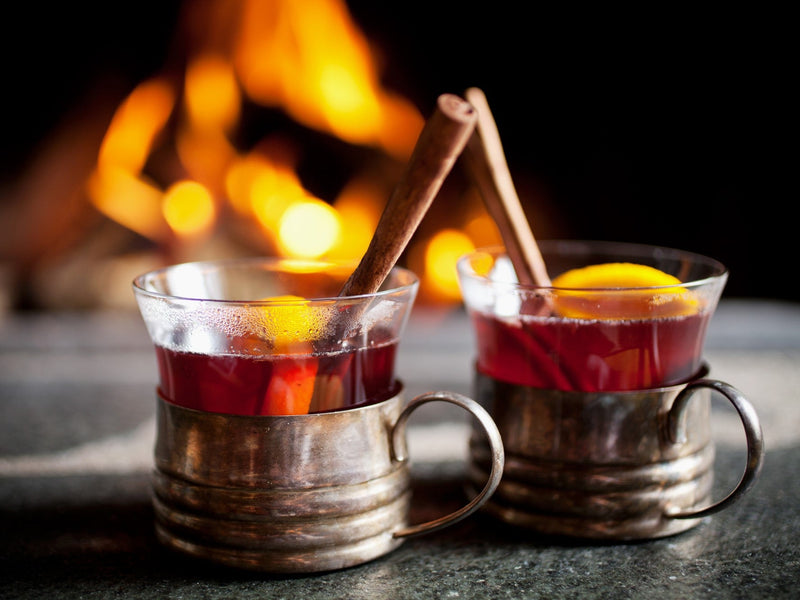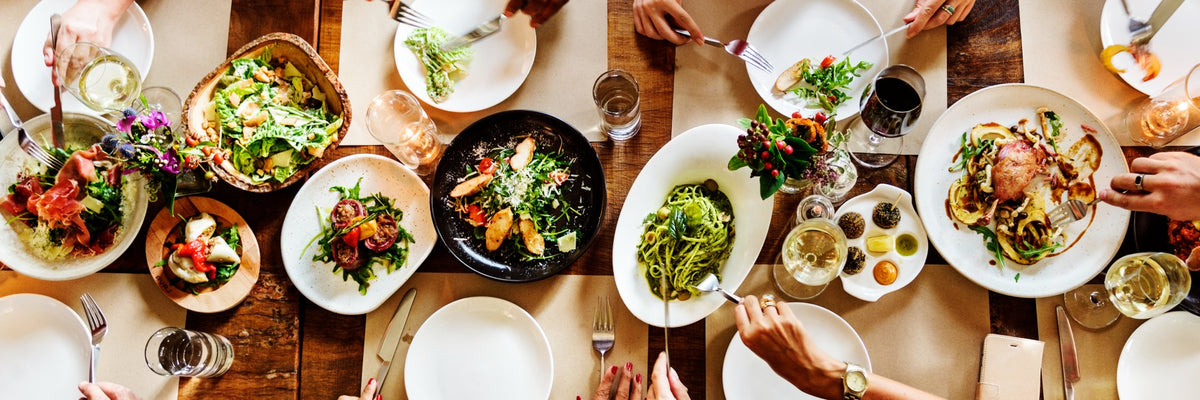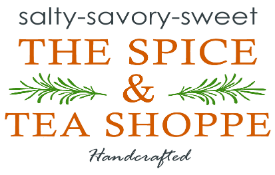
Our classic mulling spice blend comes together to create a harmonious balance of sweet, spicy, and citrusy notes that will transform your beverages and culinary creations into festive delights, creating a cozy atmosphere of Hygge.
The Heartwarming Tradition of Mulling Spices:
Mulling spices have a fascinating history that adds a special touch to autumn and winter celebrations and is especially beloved during the Christmas season. The roots of spiced wine can be traced to Persian, Moorish, and Middle Eastern influences, which were later embraced and adapted by European cultures. The practice of mulling wine with spices and aromatics has a rich and diverse history, and it has become an integral part of the culinary traditions of many regions around the world.
There's Moor than Meets the Eye:
The Moors, who were Muslim inhabitants of the Iberian Peninsula (including present-day Spain and Portugal) during the Middle Ages, are often credited with introducing the concept of spiced and mulled wines to Europe. The Moors contributions to the enlightenment of Europe cannot be understated. They improved and expanded on the Roman irrigation systems and helped develop the agricultural sector in Spain and introduced new crops including lemon, orange, apricot, peach, pomegranates, and figs. They also brought cotton, silk, sugar cane, rice. and thankfully, lots of spices.
While spiced wine is not a traditional Middle Eastern beverage, it's important to appreciate that these recipes were adaptations of recipes and techniques shared by Muslims who traditionally infused coffee, tea and fruit juices with bold spices which led to mulling wine, cider, juices and ales. These blends originated centuries ago and were crafted to enhance the flavors of wines and spirits and warm the soul on a cold winter’s night. The spread of the tradition of mulling spices from the Muslim-ruled Iberian Peninsula to the rest of Europe, including Germany, was facilitated by trade, cultural exchange and, historical events like the Reconquista wars. The appeal of spiced drinks in various European climates and culinary traditions continued to grow through the generations and are now more popular than ever before.

The Moorish built Alhambra at sunset in Granada, Andalusia, Spain
European Roots in the United States:
In the United States, apple cider infused with mulling spices is a beloved fall tradition, with the scent of cinnamon and cloves wafting through homes during the holiday season. The popularity of spiced wine, particularly mulled wine, in the United States can be attributed to several factors and historical influences. Whether you lean more towards apple cider or wine is often influenced by when and where your ancestors immigrated from.
Colonial and Early American Roots:
The tradition of mulled wine in the United States has colonial and early American roots. European settlers, including the English and Dutch, brought with them the practice of mulling wine. They adapted it to locally available ingredients and often used apple brandy or cider as a base, given the abundance of apples in the American colonies.
Cultural Exchange and Immigration:
Over time, the United States experienced waves of immigration from various parts of Europe, each bringing its culinary traditions. Many of these traditions included the preparation and consumption of spiced and mulled beverages. This further diversified and enriched the American culinary landscape. American culture, particularly through literature, film, and television, has often romanticized the idea of cozy winter gatherings with warm, spiced beverages like mulled wine. This has contributed to its enduring appeal.
Continued Tradition:
The tradition of mulled wine persisted through American history, often associated with holiday and winter celebrations. It became a popular beverage during the Christmas season and was enjoyed in a variety of social settings, from family gatherings to community events. In recent years, there has been a resurgence of interest in traditional and artisanal beverages, including mulled wine. This has been driven by a growing appreciation for craft and artisanal products, as well as a desire to rediscover and celebrate traditional culinary practices. While mulled wine and cider are the most well-known applications, mulling spices can also enhance a wide range of dishes, making them perfect for your autumn and Christmas menu. Consider using our mulling spice blend to infuse warmth and depth into savory dishes, such as braised meats, stews, and marinades, to give them that seasonal touch and poached fruits such as apples, pears and plums and dried fruits as well.
Cultural Influences:
Culinary Trends: The United States has seen a rise in culinary experimentation and the popularity of craft cocktails and artisanal beverages. As a result, mulled wine and mulling spices have found their place in modern mixology, with creative variations and recipes emerging in bars and restaurants and Mulling Spices from The Spice and Tea Shoppe making an appearance in many delicious craft beers and meads.

Early Colonial American Women Cooking
Mulling Spices: European Roots:
The use of mulling spices is deeply embedded in autumn and Christmas traditions around the world. In Europe, particularly in Germany and Scandinavia, the spiced, mulled wine, or Glühwein, warms hearts during the holiday season and is an integral part of celebrations with friends and family.
Germany:
Germany experiences cold winters, and the consumption of hot, spiced wine provides a comforting and warming experience. It helps people stay cozy and ward off the chill during the colder months. Glühwein is a staple at German Christmas markets, which are a cherished tradition in the country. These markets, known as "Weihnachtsmärkte," are held throughout Germany, and they feature numerous stalls selling gifts, crafts, and festive foods. Glühwein is the quintessential drink at these markets, and it helps create a warm and festive atmosphere. Families and friends often gather to make and enjoy it together and it creates a sense of ritual and anticipation. Glühwein is closely associated with holiday celebrations, particularly Christmas. It is served during Advent and throughout the holiday season, making it an integral part of festive traditions. Families often sip Glühwein while decorating Christmas trees or attending church services. To make the Christmas experience more family-friendly, there are non-alcoholic versions of Glühwein, often called "Kinderpunsch" or "Children's Punch." These non-alcoholic versions are made with fruit juices, spices, and sometimes carbonated water to mimic the flavors and warmth of Glühwein without the alcohol.

Mulled Red Wine (Glühwein) is Enjoyed at Weihnachtsmärkte
Recipe:Mulled Red Wine (Glühwein)
United Kingdom:
In the United Kingdom, especially during the winter months and the holiday season many households prepare mulled wine at home. It's a delightful tradition to make a batch of mulled wine, filling the home with the comforting aroma of spices and warm wine. In addition to the classic recipe, the UK offers many variations of mulled wine. Some recipes incorporate additional ingredients like brandy, port wine, or apple cider to enhance the flavor and alcohol content. Mulled wine is often served with accompaniments such as mince pies, gingerbread cookies, or roasted chestnuts. These pairings complement the warm, spicy flavors of the wine and contribute to the festive experience. In addition to mulled wine, the United Kingdom has a unique version of spiced wine called "Wassail." Wassail is a hot, spiced punch made with ale and/ or cider and is traditionally consumed during Christmas and Twelfth Night celebrations and can be a very boozy concoction. Wassail was said to have made the rich a little more generous than usual, and the poor would sing their way through the streets of England, offering good cheer and good fortune if the master would give them a drink from the wassail bowl.

Holiday revelers enjoy a nip from the wassail bowl.
France:
In France, spiced wine is known as "Vin Chaud" or "Gluhwein", and it is also enjoyed during the winter months, particularly in the northeastern regions of the country. Vin Chaud is a cherished winter tradition in France, it is enjoyed in various settings, from Christmas markets and ski resorts to family gatherings and cozy evenings at home and is a delightful way to embrace the winter season and create festive memories. Vin Chaud is often enjoyed with traditional French pastries like pain d'épices (spice bread) or galette des rois (king cake), especially during the holiday season. These treats pair well with the warm, spiced flavors of the wine. Whether it's sipping Vin Chaud at a bustling Christmas market, a charming ski chalet, or a cozy family gathering, the drink contributes to a festive and convivial atmosphere in France. In Normandy, France, spiced cider is often preferred over spiced wine. Normandy is renowned for its apple orchards and apple-based products, including cider, calvados (apple brandy), and pommeau (a blend of apple juice and calvados). Therefore, spiced cider is the more popular and traditional fall and winter beverage choice in this region.
Recipe:Hot Spiced Apple Cider
Spain:
In Spain, spiced wine is a traditional and beloved beverage, especially during the winter months and the Christmas season. The Spanish version of spiced wine is known as "Vino Caliente" or "Vino Tinto Caliente," which translates to "hot wine" or "hot red wine." In Spain, Vino Caliente is often served with a variety of traditional holiday treats, such as turrones (nougat), mantecados (shortbread), and polvorones (crumbly almond cookies). These pairings complement the festive atmosphere and create a delightful sensory experience.
Poland:
In Poland, spiced wine is known as "Grzane Wino," which translates to "mulled wine" in English. Grzane Wino is a popular and cherished beverage during the winter months and the holiday season, much like in many other European countries. Grzane Wino is often served with traditional winter and holiday treats, such as pierniki (gingerbread cookies), makowiec (poppy seed cake), and kruszonka (streusel-topped cake). These pairings complement the festive atmosphere and create a delightful combination of flavors.
Austria:
In Austria, spiced wine is known as "Glühwein," like the German name. It is a popular winter beverage, especially during the Christmas season. Austrian Glühwein is often made with red wine, spices, and citrus zest. In Austria it is often enjoyed with Bratwurst and other types of sausages, pretzels, cheeses, such as Emmental, Gruyère, and Camembert, roasted chestnuts: Roasted chestnuts, gingerbread Cookies (Lebkuchen) and apple strudel (Apfelstrudel).
Italy:
In Italy, spiced wine is referred to as "Vin Brulé." It is particularly popular in the northern regions of Italy during the winter months. Like other spiced wines, it features red wine infused with spices and sometimes includes a splash of brandy. It is often served with Panettone, a traditional Italian Christmas cake, like a fruitcake, and it pairs wonderfully with Vin Brulé. Its sweet and fruity flavors complement the spiced wine. Another popular Italian Christmas cake is Pandoro, a sweet, golden bread-like cake dusted with powdered sugar, roasted chestnuts, or amaretti cookies which are almond-flavored cookies with a slightly bitter edge. Also popular are pizzelle which are thin, crisp, waffle-like cookies often flavored with anise or vanilla and cantuccini which are an Italian almond biscotti. Italian cheeses like Gorgonzola, Parmigiano-Reggiano, and Pecorino are also popular choices to enjoy with Vin Brulé. The combination of savory cheese and spiced wine creates a delightful contrast.
Russia:
In Russia, spiced wine is known as "Глинтвейн" (Glintveyn), a transliteration of the German "Glühwein." It is a warming and popular beverage during the cold Russian winters, often featuring spices like cloves and cardamom. Sbiten is a traditional Russian beverage made by mulling honey with various herbs and spices. It is similar in spirit to spiced wine and is often enjoyed alongside it. Pryaniki are Russian gingerbread cookies or cakes. They are richly spiced and sweet, making them an ideal pairing with the spiced flavors of Glintveyn as are dried fruits and nuts such as apricots and figs, along with nuts like almonds and walnuts, can be enjoyed with Glintveyn as a simple and satisfying accompaniment.
Portugal:
In Portugal, where spiced wine is known as "Vinho Quente," it is often enjoyed with a variety of foods that complement its warm, spiced flavors. Some common foods that Portuguese people may enjoy with Vinho Quente include bolo Rei, a traditional Portuguese Christmas cake resembling a fruitcake. It is rich, sweet, and studded with candied fruits and nuts, making it a perfect pairing with the spiced notes of Vinho Quente. Broa de Milho is a traditional Portuguese cornbread that is hearty and slightly sweet. Fried dough pastries called filhós are often dusted with sugar or drizzled with honey and Rabanadas a Portuguese-style French toast is popular. Presunto, a type of cured ham and, frutos secos which are a variety of dried Fruits and nuts are often eaten as finger foods at gatherings.
Greece:
In Greece, spiced wine is known as "Ζεστό Κρασί" (Zesto Krasi), which translates to "Hot Wine." It is enjoyed during the winter season and is sometimes prepared with local spices and Greek mountain tea. It is typically served alongside various foods that complement its warm and spiced flavors. Some common foods that Greeks may enjoy with Zesto Krasi are kourabiedes a traditional Greek butter cookies dusted with powdered sugar, melomakarona another beloved Greek holiday cookie made with honey, cinnamon, and crushed walnuts. Loukoumades are Greek doughnuts often drizzled with honey and sprinkled with cinnamon or chopped walnuts and pasteli is a traditional Greek sesame seed and honey candy. Also, fruit and nut platters with a selection of dried fruits, such as figs, apricots, and raisins, along with various nuts like almonds and pistachios, or halva, a sweet confection made from sesame seeds and sugar, and often flavored with cinnamon or cocoa.
Denmark:
I saved Denmark for last as it not only enjoys mulled wine but has a word and a concept for the feelings that I think best describe how many of us feel this time of year. In Denmark where my cousins live the tradition of Hygge (pronounced "hoo-guh") is a Danish word that encompasses a concept of coziness, comfort, and well-being. Although spiced wine has cultural similarities to other European countries, the Danes have a way of encapsulating these feelings of warmth and have been able to describe what feels indescribable.
What is Hygge (hoo-guh)?
Hygge is:
- Coziness: Hygge is all about creating a cozy and comfortable environment. This can be achieved through soft blankets, warm lighting, comfortable furniture, and a focus on relaxation.
- Simplicity: Hygge often involves simplifying your surroundings and decluttering to create a sense of calm and tranquility. It's about enjoying the simple pleasures of life.
- Warmth: Warm lighting, such as candles or soft lamps, is an essential aspect of hygge. The soft glow creates a calming and soothing atmosphere.
- Connection: Hygge also emphasizes spending quality time with loved ones, whether it's sharing a meal, playing board games, or simply enjoying each other's company. It's about building meaningful connections and nurturing relationships.
- Nature: Embracing the outdoors and nature is another important aspect of hygge. Going for walks in the forest, enjoying a picnic, or simply bringing natural elements like plants, evergreens and wood elements indoors can enhance the sense of well-being.
- Comfort Food and Drinks: Enjoying comfort foods and warm beverages is a central part of hygge. This can include homemade soups, hot chocolate, pastries and hot spiced wine.
- Self-Care: Taking care of oneself is a key component of hygge. This can involve practices like meditation, reading, or taking a long bath in soft candlelight or soft surroundings like silky pajamas.
- Hygge is a cultural and lifestyle concept associated with creating a warm and inviting atmosphere, especially during the colder months of the year, but it can be embraced year-round.
Hygge is not just about the physical environment; it's also about the mindset and attitude towards life. It is about encouraging mindfulness, gratitude, and a focus on the present moment. It's a way of finding joy and contentment in everyday life, even in the simplest of moments.
Whether you're savoring a comforting cup of mulled wine by a crackling fireplace or relishing a thermos of spiced cider amidst the colorful chore of leaf-raking, every sip holds the promise of crafting cherished memories with dear ones and embarking on a flavorful journey around the world, one delightful cup at a time.
Let's Get Cooking
For more culinary inspiration, be sure to visit our recipe page. Here, you'll find a diverse collection of delicious recipes for every taste, season and occasion.



